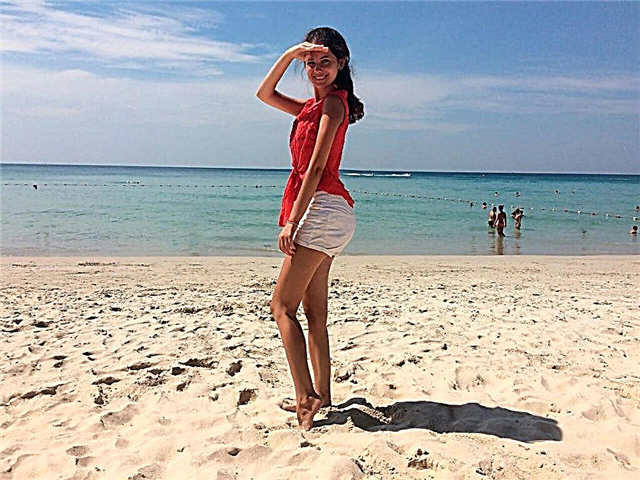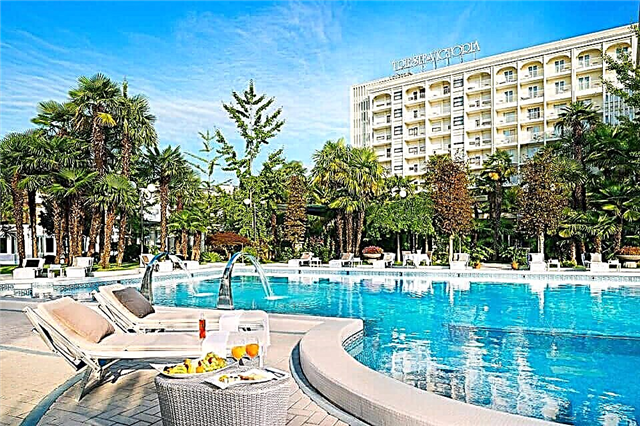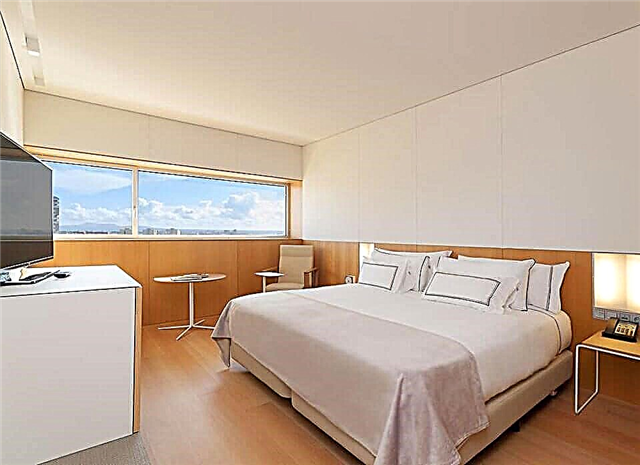The most "German" of all cities in Germany - Nuremberg, has seen many important historical events in its lifetime. Unfortunately, the first thing that comes to mind is the triumph of the Third Reich, the Nazi military marches and the devastating Nuremberg trials. The city was treated kindly by Hitler, here he planned to build a grandiose architectural complex for the needs of his party.
But there is another Nuremberg, in which tourists admire the medieval streets of the Old Town, the flying spiers of the magnificent Frauenkirche (a little embarrassing that it was built on the site of a burnt synagogue), centuries-old traditions of urban artisan associations and hearty Franconian cuisine. For the convenience of guests of Nuremberg, a special tourist route has even been created that covers all the important attractions.

The best hotels and hotels at affordable prices.
from 500 rubles / day
What to see and where to go in Nuremberg?
The most interesting and beautiful places for walking. Photos and a short description.
Nuremberg fortress
A unique monument of medieval architecture located in the Old Town. There is an observation deck on the watchtower of the castle, from where panoramic views of Nuremberg and the surrounding area open. The fortress was built in the XII century. It consists of an imperial castle, a burgrave's fortress and a city fortress. The complex is protected by thick walls that were able to repel the strongest onslaught.

Market Square
The square emerged in the 14th century on the site of the Jewish ghetto; in 1349, on the Day of St. Nicholas, hundreds of people were burnt here. The place is decorated with a picturesque gilded fountain in the form of a spire. This structure was really supposed to become the spire of the city church, but due to lack of funds, it was erected in the middle of the Market Square. On Christmas Eve, holiday fairs open here, and the surrounding houses are decorated with colorful garlands.

Historic Nuremberg Mile
A tourist route organized and equipped by the city authorities especially for guests of Nuremberg. The Historic Mile runs through all the significant landmarks and is equipped with hints and signs to help tourists navigate the area and not miss out on anything of interest. The route starts at the Tower of Our Lady and ends at the Myasny Bridge.

Church of Our Lady (Frauenkirche)
A Catholic church on the Market Square, built on the site of a Jewish synagogue in the middle of the 14th century. The structure retained its original appearance until the Second World War. After the bombing, only the walls and facade remained. The church was reconstructed in 1946-53. The building is made in the style of flying German Gothic, the front facade is decorated with a historical clock from the beginning of the 16th century, inside there is an altar from the middle of the 15th century.

Church of St. Lawrence
Lutheran temple, which was one of the first to accept the new church teaching of M. Luther. There is evidence of the construction of the church in the 13th century, but a building of the 15th century has survived to this day. Church of st. Lawrence is built in the Gothic style, it is considered the most beautiful temple in Nuremberg. The interiors were painted by local artists A. Kraft, P. Fischer and F. Stoss. The building was seriously reconstructed after the Second World War.

Church of St. Sebald
Another magnificent 13th century Gothic temple that adorns the architecture of Nuremberg. The church was named after the hermit and pious missionary Saint Sebald, the patron saint of the city. The temple was erected by supporters of the Lutheran doctrine. Until 1945, the interior was decorated with a unique 15th century organ, played by the composer I. Pachelbel. As a result of the destruction, the tool was lost and replaced with a new one in 1975.

Albrecht Durer House Museum
Home of the famous 15th century Nuremberg woodcutmaker who made an invaluable contribution to Western European art during the Renaissance. A. Durer owned the building until 1528, after which it changed owners many times. The museum was organized at the end of the 19th century. It managed to avoid serious destruction during the war, so today visitors can see the original historical setting.

German national museum
The largest museum in Germany, founded in the middle of the 19th century within the walls of a former monastery. The museum funds contain more than 1.2 million exhibits belonging to different eras - from the Stone Age to the present day. It houses paintings, sculptures, tools, musical instruments, old globes and clocks, weapons, scientific instruments, objects of applied art and much more.

Toy Museum
The museum is located in a three-story building from the early 16th century. The exposition is based on the private collection of the Bayer family. Baked clay dolls began to be produced in Nuremberg as early as the 14th century; in the 17th century, local craftsmen invented doll houses, which later gained enormous popularity among children. The collection of the museum contains about 65 thousand copies, including old samples and modern inventions of the "toy" industry.

Palace of Justice
The famous building where in 1946 the Nuremberg trials were held over the leaders of Nazi Germany. The palace was built at the beginning of the 20th century. For the trial of Hitler's associates, he was not chosen by chance - regular congresses of the Nazi party were held here. Nuremberg at one time was even called "the city of congresses of the party of the Third Reich." Hall No. 600, where the historical process took place, has been open to the public since 2000.

Hospital of the Holy Spirit
The institution has been operating since the XIV century and is considered one of the oldest hospitals in Europe. Now on its territory is a nursing home. In past centuries, the hospital also served as a shelter for lepers. The building is located in the Old Town, it is surrounded by a very picturesque landscape. The medieval building stands right on the water among lush vegetation.

House of Nassau
Medieval tower of the 12th century, which is considered the oldest building in Nuremberg. The upper tiers were erected later, in the 15th century. The architects of the building took the residential towers of Italy as a model for their project. In those distant centuries, the urban aristocracy lived in such houses. The building belonged to different families, the last owners were representatives of the Schlüsselfelder clan.

Mauthalle building
The construction of the late 15th century, designed by G. Beheim. Previously, there was a customs office and a warehouse on its territory. The modern Mauthalle building was restored after almost total destruction during the Second World War. Today the premises are rented by commercial organizations, in the basement there is the Barfusser restaurant, which serves Franconian cuisine.

Tucherchloss castle
The ancestral castle of the noble Tucher family, which was used as a summer residence. The building was erected in the middle of the 16th century; features of the German Gothic, French and Italian Renaissance are guessed in its architecture. The castle still belongs to the descendants of the Tucher family, but there is a public museum on its territory, where antiques, paintings, precious dishes and other attributes of high society life are exhibited.

Territory of congresses of the NSDAP
During the Third Reich, Nuremberg was almost the favorite city of Hitler and his party associates. Here congresses of the NSDAP were constantly held, Nazi detachments marched through the squares, the streets were hung with red flags with a black swastika.In Nuremberg, there is a whole area (Dutzendteich Park), which was specially rebuilt for the needs of the NSDAP, it was called the "Territory of the imperial party congresses". The area's monuments and artifacts tell a lot about Hitler's incredible ambitions.

Nazi Party Documentation Center
Archives of the Nazi Party, which is located in the monumental building of the Congress Hall. The building was erected by order of A. Hitler, but they could not fully implement the project. The funds of the center contain unique printed, photo and video materials, eyewitness accounts. Here you can see the book "Mein Kampf" and familiarize yourself with its contents. The architecture and interior of the building make a gloomy and depressing impression on tourists.

Fountain "Marriage Carousel"
Fountain built in 1984, located at Ludwigplatz. Its author Yu. Weber embodied in the sculptural group the idea of light and dark sides of family life (the poem by H. Zags "Bittersweet marriage life" was taken as a basis). For a long time there was debate among the public about the acceptability of some parts of the composition and the "decency" of their placement in a public place.

"Beautiful" fountain
The most famous city fountain located in the central Market Square. It is believed that it was a dome for the Frauenkirche church, but the authorities simply did not have enough money to install it on the top of the temple, so the structure remained on the ground. The fountain was built in the 14th century. The drawing of Kaiser Charles IV was taken as a basis. For medieval Nuremberg, this was a great event, since the inhabitants, after the construction of the fountain, could get access to clean water.

Nuremberg zoo
The Nuremberg Zoo is as solid and technically equipped as the rest of the zoological gardens in Germany. According to the established tradition, animals are kept here in natural conditions and provide them with the most comfortable existence (as much as possible in captivity). There is a dolphinarium at the zoo. For the convenience of visitors, a huge free parking lot for almost 2 thousand places has been organized.

City Park
A small, cozy park, a place for quiet rest, meetings, walks and contemplation of nature. On its territory there is a fountain "Neptune", which is a copy of the fountain in Peterhof. The fact is that the original was originally located in Nuremberg, but was bought from the city by Paul I. The authorities decided to make a copy and place it on the market square. In the 60s. XX century, the building was moved to the city park.












